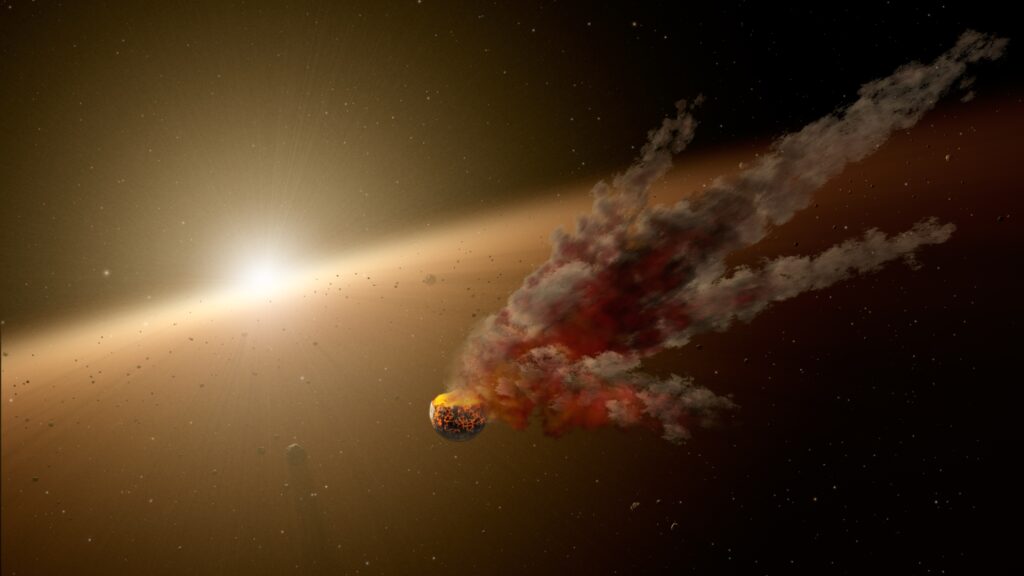The extinction of dinosaurs represents one of Earth’s most profound ecological transitions, transforming the planet’s biodiversity and paving the way for mammalian dominance. For decades, scientists attributed this mass extinction to a single asteroid impact at Chicxulub, Mexico. However, emerging research suggests a more complex scenario – the possibility that Earth experienced not one, but two major asteroid impacts during the late Cretaceous period. This “Two Asteroid Theory” has sparked debate among paleontologists, geologists, and astronomers, challenging our understanding of the events that ended the age of dinosaurs. By examining recently discovered impact craters, analyzing geological evidence, and studying extinction patterns with greater precision, researchers are piecing together a more nuanced picture of this pivotal moment in Earth’s history.
The Chicxulub Impact: The First Deadly Blow

The Chicxulub impact crater, discovered in the 1970s on Mexico’s Yucatán Peninsula, remains the smoking gun in dinosaur extinction theories. This massive crater, spanning approximately 150 kilometers in diameter, was created when an asteroid estimated to be 10-15 kilometers wide struck Earth 66 million years ago. The immediate effects were catastrophic – mega-tsunamis, global wildfires, and an impact winter caused by dust and aerosols blocking sunlight. Evidence for this impact includes a worldwide layer of iridium-rich clay dating precisely to the Cretaceous-Paleogene (K-Pg) boundary, shocked quartz crystals formed under extreme pressure, and tektites (glass spherules) created from molten rock ejected during impact. The Chicxulub event coincides exactly with the mass extinction boundary, providing compelling evidence for its role as the primary extinction trigger that eliminated approximately 75% of Earth’s species.
The Boltysh Crater: A Second Impact?

Less famous but increasingly significant in the extinction debate is the Boltysh impact crater located in Ukraine. Measuring about 24 kilometers in diameter, this crater resulted from an asteroid approximately 2-3 kilometers wide striking Earth. Initial dating placed the Boltysh impact within the same timeframe as Chicxulub, but more recent research suggests it may have occurred several thousand years before or after the Mexican impact. Sediment cores drilled from the crater show a complete record of the recovery period following the impact, revealing fascinating details about how ecosystems begin to rebuild after catastrophic events. While smaller than Chicxulub, the Boltysh impact would still have caused significant regional devastation and potentially contributed to the global environmental stress that characterized this period of Earth’s history.
Timing Is Everything: Were The Impacts Simultaneous?

The precise timing of these two impacts represents one of the most contentious aspects of the Two Asteroid Theory. Some studies suggest the impacts occurred within thousands of years of each other, practically simultaneous in geological terms. Other research indicates they may have been separated by up to several hundred thousand years. The resolution of absolute dating methods continues to improve, but still contains margins of error that make definitive sequencing challenging. If the impacts were closely spaced, they might represent fragments of a single asteroid that broke apart, perhaps due to tidal forces during a previous close approach to Earth. Alternatively, if significantly separated in time, they could indicate that Earth passed through a particularly dangerous region of space with multiple large objects, or that the Late Cretaceous witnessed an unusual clustering of impact events.
The Shiva Crater Controversy

Adding further complexity to the multiple impact hypothesis is the controversial Shiva structure, located off the western coast of India. First proposed by paleontologist Sankar Chatterjee, this potential impact crater would be enormous, approximately 500 kilometers across, making it significantly larger than Chicxulub. If confirmed, it would represent the largest impact structure ever identified on Earth. However, many geologists remain skeptical, arguing that the Shiva structure’s features can be explained by normal geological processes rather than an asteroid impact. Critics point to the lack of definitive impact markers like shocked quartz and iridium anomalies. Despite these criticisms, Chatterjee maintains that Shiva represents a third major impact from the same period, potentially part of a “cosmic barrage” that collectively drove the mass extinction.
The Deccan Traps: Volcanic Complications
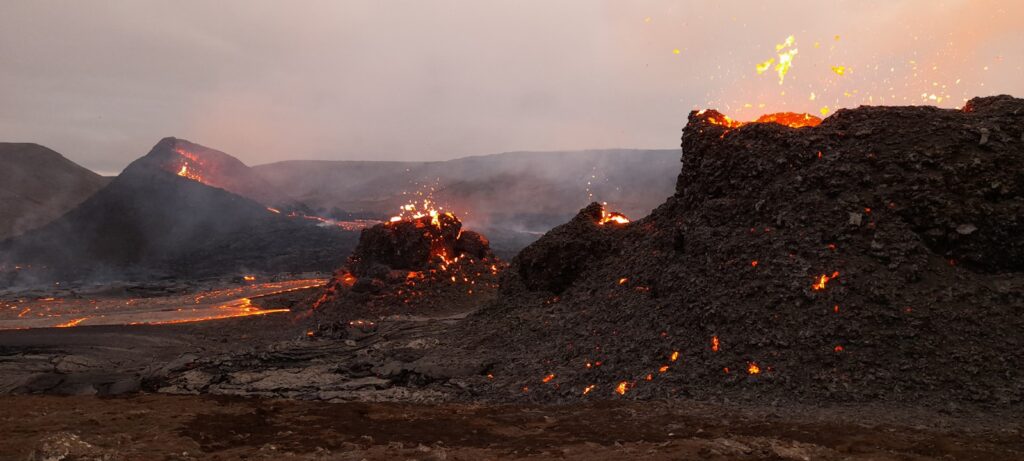
Any discussion of dinosaur extinction must acknowledge the massive volcanic eruptions occurring in what is now India during the late Cretaceous. These eruptions formed the Deccan Traps, one of Earth’s largest volcanic provinces, covering over 500,000 square kilometers with multiple layers of basaltic lava. The timing of these eruptions broadly coincides with the K-Pg boundary, leading some scientists to argue that volcanic activity, not asteroid impacts, was the primary extinction driver. Interestingly, recent research suggests the Chicxulub impact may have intensified Deccan volcanism through seismic energy transfer. This raises the intriguing possibility that the extinction resulted from a complex interplay between multiple impacts and volcanic activity, creating a “perfect storm” of environmental stressors that overwhelmed ecosystems’ resilience.
Statistical Analysis: Asteroid Clustering

The possibility of multiple near-simultaneous large impacts raises important statistical questions about asteroid behavior. Under normal circumstances, large asteroid impacts are exceedingly rare, with events on the scale of Chicxulub occurring only every 100 million years or so. The presence of multiple large impacts within a geologically brief window would be highly improbable unless some mechanism increased the likelihood of multiple asteroids reaching Earth. Some astronomers propose that the gravitational disruption of an asteroid family in the main belt could have sent several large fragments toward Earth. Alternatively, Earth might have encountered a previously intact binary asteroid, with the pair striking in quick succession. Comet showers triggered by perturbations of the Oort Cloud represent another possibility that could explain multiple closely-spaced impacts.
Fossil Record Evidence: Staged or Sudden Extinction?
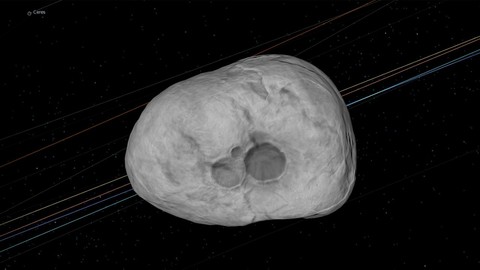
The fossil record provides crucial evidence when evaluating extinction scenarios. Traditional interpretations suggested a sudden, catastrophic extinction at the K-Pg boundary, aligning with a single impact hypothesis. However, high-resolution stratigraphic studies from some locations indicate a more complex pattern that could support multiple environmental shocks. Some researchers identify distinct phases in the extinction timing of different species groups, with certain marine organisms showing decline before the main extinction pulse. Similarly, plant fossil records from North America display evidence of ecological disruption spread over thousands of years. These patterns could be consistent with multiple impacts or a combination of impact and volcanic effects, creating compound environmental stresses that affected different ecosystems in varied ways depending on their resilience and recovery capacities.
Chemical Evidence: Multiple Iridium Spikes
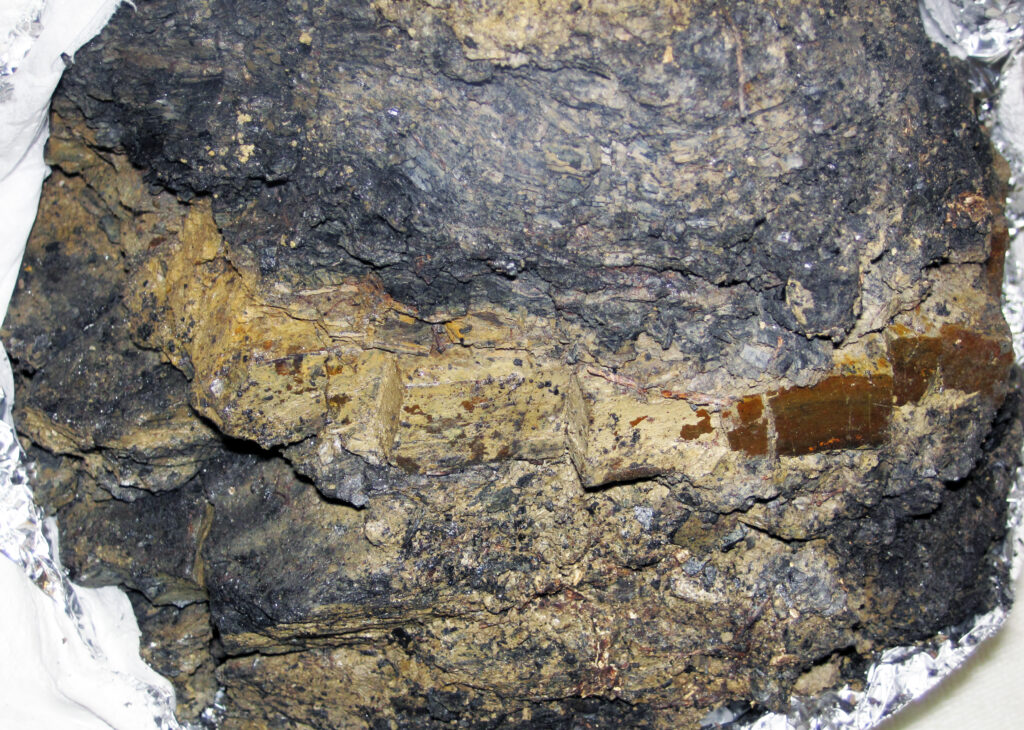
One of the most compelling pieces of evidence for the Chicxulub impact is the globally distributed iridium anomaly at the K-Pg boundary. This rare element is scarce in Earth’s crust but abundant in asteroids, making its presence a reliable impact marker. Intriguingly, some research has identified multiple distinct iridium spikes in carefully analyzed sedimentary sequences around the K-Pg boundary. A study from Denmark revealed two separate enrichment layers separated by a few thousand years of sediment accumulation. Similar multiple iridium anomalies have been reported from sites in Spain and New Zealand. While some geologists attribute these patterns to sediment reworking or post-depositional processes, others view them as evidence of distinct impact events closely spaced in time, providing chemical support for the Two Asteroid Theory.
Earth’s Climate Response: Multiple Cooling Episodes

Climate proxies from the K-Pg boundary provide another line of evidence relevant to the multiple impact hypothesis. Oxygen isotope ratios from marine sediments indicate rapid temperature fluctuations during this time, potentially reflecting separate cooling episodes. Computer models suggest a single impact would produce a distinct climate signature, with rapid cooling followed by gradual warming as atmospheric dust settled. The presence of multiple cooling pulses separated by partial recovery periods could indicate separate impact events triggering distinct climate responses. Some high-resolution studies of late Cretaceous sediments reveal complex patterns of temperature fluctuation that align with this scenario. These findings suggest Earth’s climate system may have experienced multiple shocks rather than a single catastrophic perturbation.
The Extinction Pattern: Who Survived and Why?

The selective nature of the K-Pg extinction provides clues about the extinction mechanism and potentially supports a multiple-impact scenario. While dinosaurs (except birds) disappeared completely, certain groups like crocodilians, champsosaurs, and many amphibians survived relatively unscathed. Some researchers argue this pattern is better explained by multiple environmental crises with different characteristics rather than a single catastrophic event. For example, terrestrial ecosystems might have partially recovered after an initial impact, only to face a second extinction pulse from another impact or intensified volcanism. Freshwater ecosystems showed higher survival rates than marine systems, possibly reflecting their greater resilience to certain types of environmental stress. The geographic variation in extinction intensity also suggests a complex causal mechanism potentially involving regional differences in impact effects.
Searching For Additional Craters
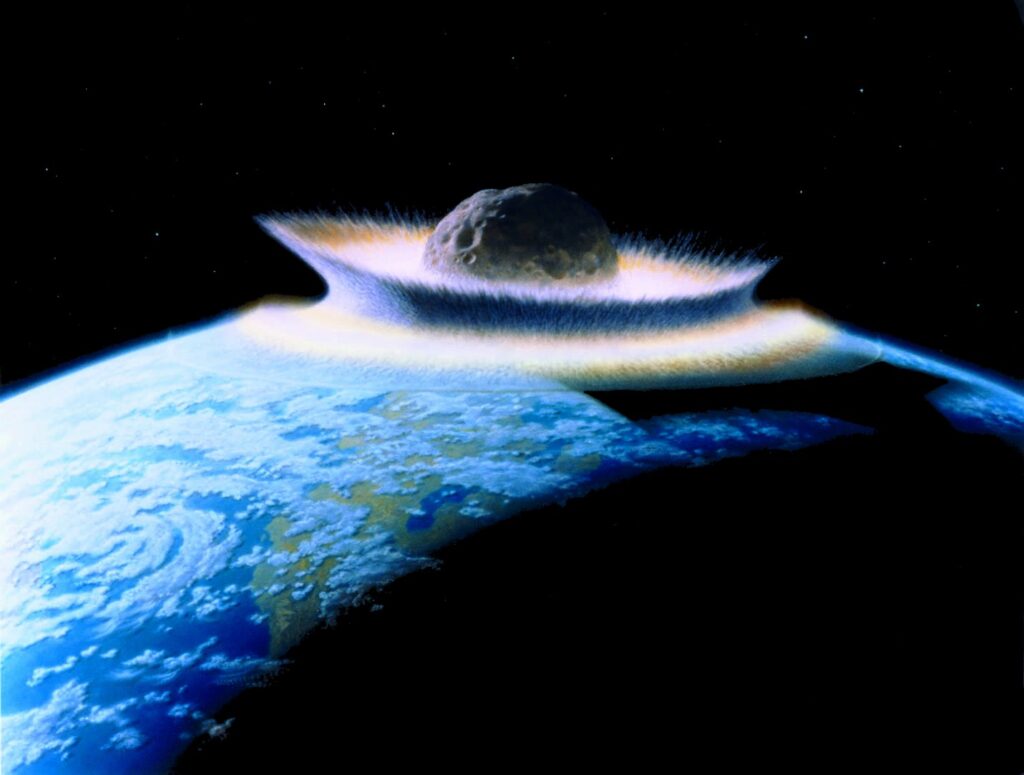
The Two Asteroid Theory has spurred intensified efforts to locate additional impact structures dating to the late Cretaceous period. Many impact craters remain undiscovered, particularly those under ocean sediments or in geologically active regions where evidence is quickly eroded or buried. Advanced satellite imagery, geophysical surveys, and seafloor mapping technologies are enabling more systematic searches. Several candidate structures have been identified but require further investigation to confirm their impact origin and precise age. The Silverpit structure in the North Sea, initially proposed as a late Cretaceous impact crater, has since been reinterpreted as a collapse feature. Other potential sites include anomalous geological structures in the Atlantic Ocean and Antarctic regions that display some characteristics consistent with impact features but remain incompletely studied.
Alternative Explanations: Asteroid Shower Theory

Moving beyond the Two Asteroid Theory, some researchers propose that Earth experienced a more extensive asteroid shower during the late Cretaceous. This hypothesis suggests our planet encountered a dispersed field of asteroid fragments, resulting in multiple impacts over thousands or even millions of years. Support for this idea comes from studies of impact glass found in Haiti, which shows chemical compositions suggesting multiple projectiles rather than a single asteroid type. Additionally, astronomical models indicate that major disruption events in the asteroid belt can create swarms of fragments with similar orbital characteristics, increasing the probability of multiple Earth impacts over relatively brief geological intervals. Some researchers connect this possibility to the breakup of the proposed Baptistina asteroid family, though the timing of this event remains disputed and may postdate the K-Pg boundary.
Scientific Implications and Future Research

The Two Asteroid Theory holds profound implications for our understanding of extinction events, impact hazards, and Earth’s geological history. If confirmed, it would demonstrate that mass extinctions can result from compound disasters rather than single catastrophic events. This perspective aligns with growing evidence that major transitions in Earth’s history often involve multiple interacting factors rather than simple cause-and-effect relationships. Future research directions include more precise dating of confirmed impact structures, continued exploration for additional craters, and development of sophisticated climate models that can simulate the effects of multiple closely-spaced impacts. Advanced analytical techniques like clumped isotope thermometry and biomarker analysis promise to reveal environmental conditions during this critical transition with unprecedented detail. The search for evidence in the deep sea and polar regions, where sedimentation is often continuous and well-preserved, may provide crucial data to resolve these questions.
Conclusion
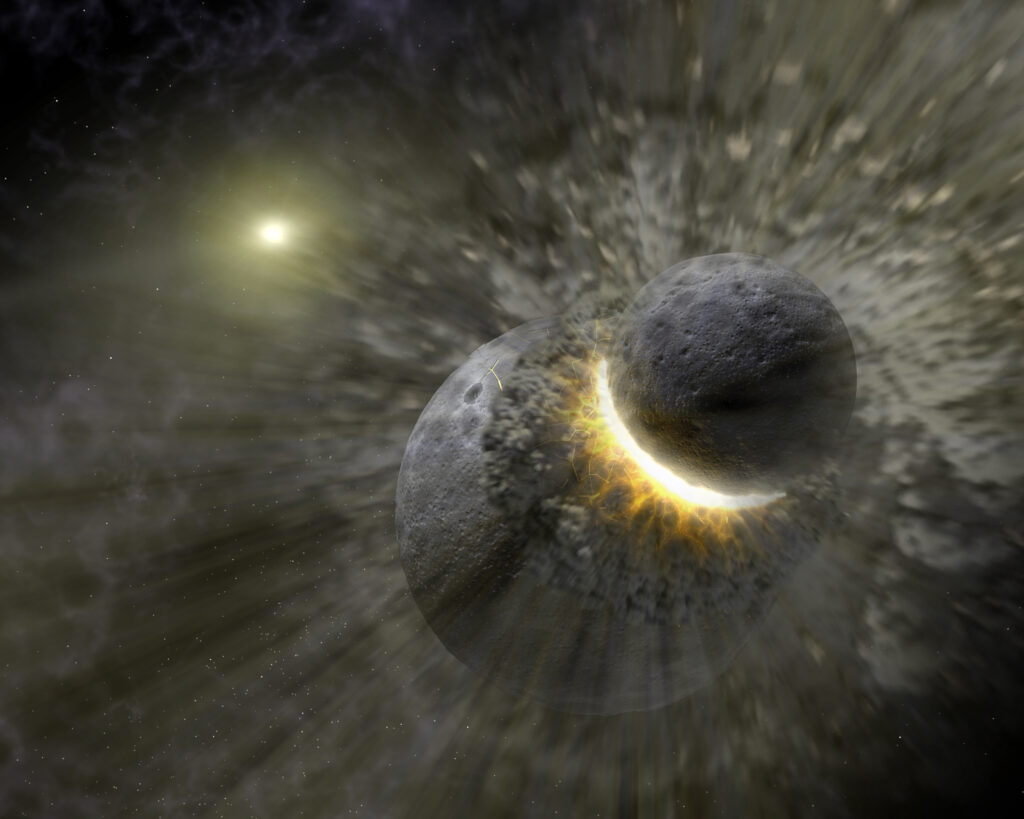
The Two Asteroid Theory represents an evolving scientific narrative that illustrates how our understanding of major events in Earth’s history continues to develop. While the Chicxulub impact remains the primary driver behind the K-Pg mass extinction, the possibility of additional impacts adds nuance to this pivotal transition. Whether Earth experienced multiple impacts or a combination of impacts and volcanic effects, the end-Cretaceous extinction resulted from extraordinary environmental stresses that reshaped our planet’s biological landscape. As research techniques advance and new evidence emerges, our picture of this transformative period grows increasingly sophisticated, reminding us that nature’s most profound transitions rarely have simple explanations. The Two Asteroid Theory, regardless of its ultimate validation, has already enriched our understanding of extinction dynamics and the complex interplay between cosmic events and Earth’s systems.

